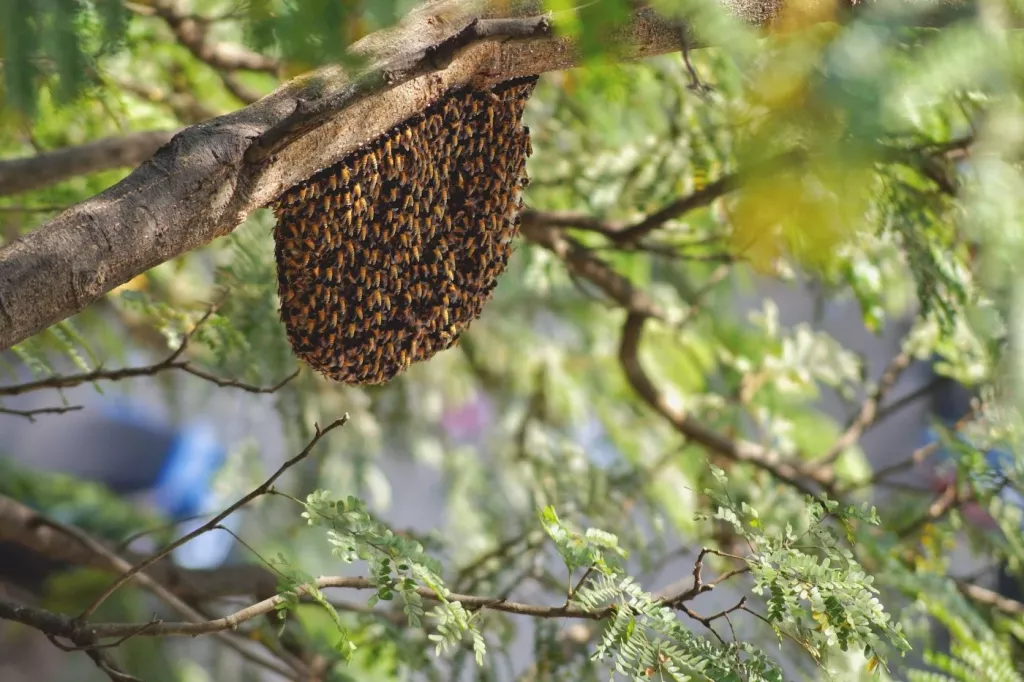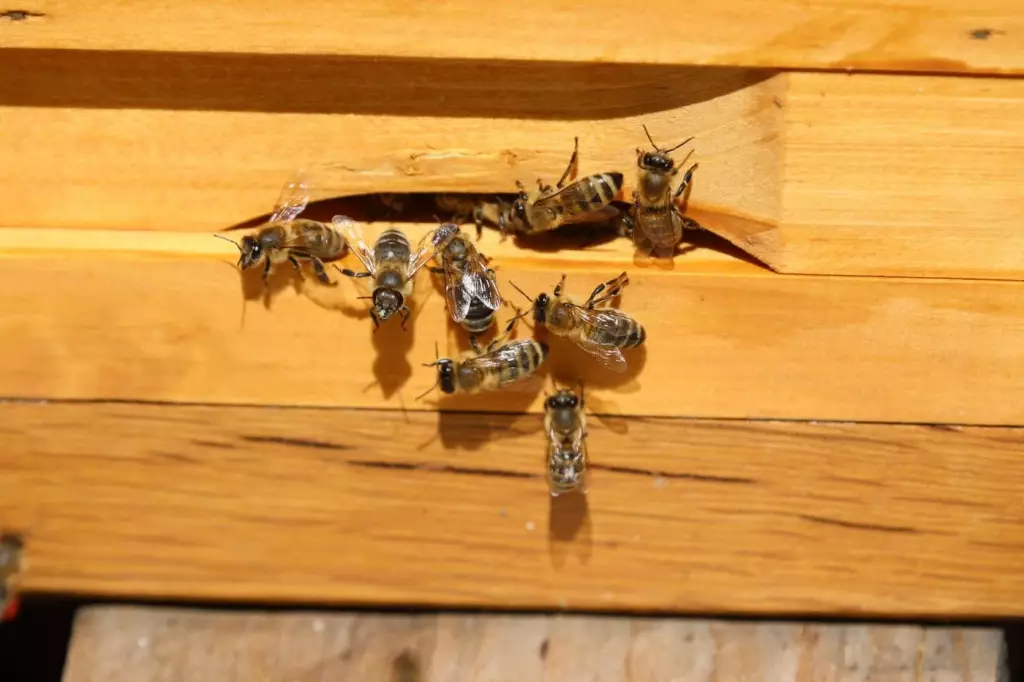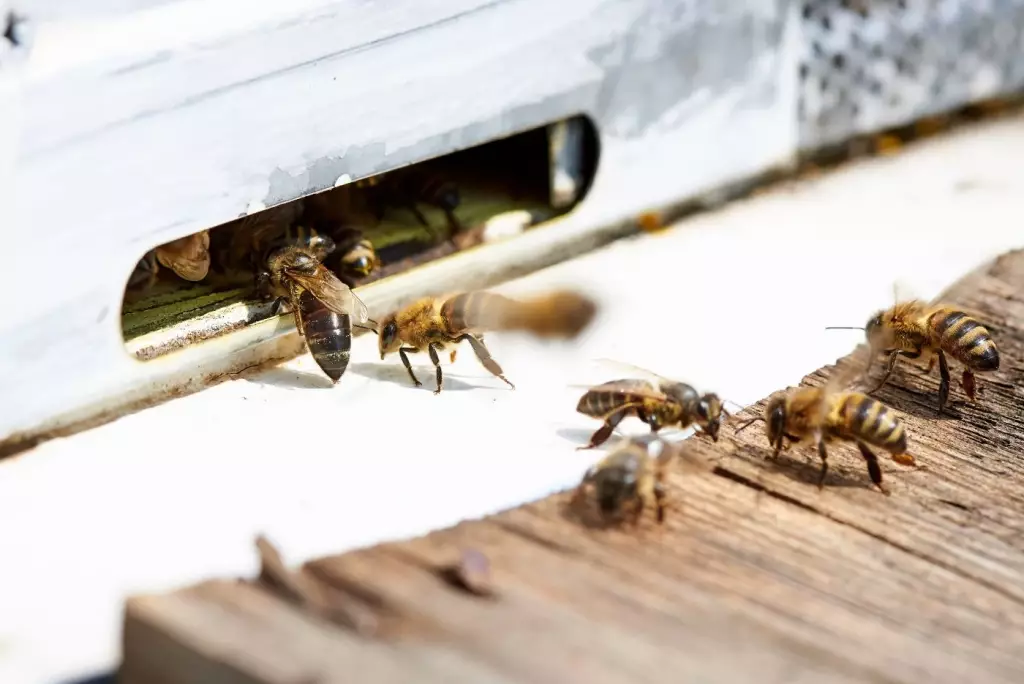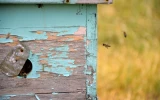Where Do Honeybees Build Hives? - 7 Common Locations
The first thing bees do before they build their home is finding a suitable location for it. They spend a great deal of time just inspecting possible spots to build their hive. This article will take you to the most common locations where honeybees build their hives.
Honeybees build their nests either in the open or in cavities. The most common locations where honeybees build hives are: behind siding and brick, in concrete blocks, in hollow trees, tree branches, in eaves and soffits of houses, under sheds and outbuildings, and sometimes even in cliff overhangs.
The preference for such locations is due to several factors that bees consider. It also depends on bee species. Find out more below about what factors affect the honeybees' choices in location when it comes to building their hives.
Summary
- Honeybees build their nests either in the open or in cavities.
- Many factors are considered by honeybees before transferring to a location.
The nesting requirements of open nesting honeybees differ from those of cavity nesting honeybees.

On this page:
Honeybees and their Hive Locations
Different species of bees have different approaches to building their hives. The most common types of beehives built by bees are underground hives, exposed hives, and tree hives. Bees build hives for the sole purpose of having a home that can house the queen bee and her larvae and where they can perform processes necessary for their survival.
Different bee species also have different nesting styles. Nesting style refers to the method by which bees build their nests or hives. The bees are classified as either ground nesters, wood and pith nesters, architects, cavity nesters, or renters.
Honeybees are classified as cavity nesters. They build their nests in cavities above or below the ground. Asian honeybees build their nests in the open, while some honeybee species build hives in cavities like hollowed trees.
The 7 most common locations where honeybees build their hives are the following:
Behind siding and brick
Honeybees can slide through an 1/8-inch gap to build their hive in siding and brick. These very slim gaps are enough to provide ventilation to the hive.
Within concrete blocks
Gaps within concrete blocks are like a haven for honeybees to start their hive. It provides them with enough safety from predators and bad weather conditions and is difficult for humans to locate.
In eaves and soffits
The eaves are the edges of the roof that overhang and project beyond the side of a building. A soffit, on the other hand, is the underside of the eaves. Since eaves and soffits are undisturbed spots in houses, they make a great choice for bees to nest.
In hollowed trees
Hollowed trees are the most preferred location for honeybees when building a hive. Hollow trees offer solid insulation for the hive during extreme outside temperatures. They also have a considerable depth and are immovable, which is why honeybees prefer them most.
Under sheds and outbuildings
One good reason why under the shed of homes can be suitable for honeybees is that they are less disturbed in these spots. For bees, less exposure means more protection.

In branches of trees
Bees clump in the branches of the tree, forming an aggregation to thermoregulate and scare off predators. Bees often do this clumping, which is commonly called a "bee swarm". A bee swarm happens when half of the bees in a colony, together with their queen, leave their old colony to find a new place that will serve as their nest. This is usually the result of an overcrowded hive.
While scout bees look for a suitable place to build their new hive, bees swarm temporarily. However, there are cases when the swarm takes a long stay in tree branches. If you notice that the bees are beginning to produce beeswax and start comb-making at the spot where the cluster formed, they are now starting a hive in your tree branch.
When bees start to build a hive on your tree property, they become dangerous and can sting in order to protect their newly acclaimed home.
In cliff overhang
The giant Asian honeybees build massive nests on vertical cliffs or hanging rock formations. As dangerous as their location is, harvesting honey from these bees is also dangerous.
How Honeybees Choose Their Beehive Location
Bees are very organized kind of insects. They don't build their homes just anywhere. It takes a long process of selection before they finally settle in one place.
When the house-hunting process of honeybees begins, the first noticeable change is the behavior of the foragers. They will stop hunting for nectar and pollen and will switch to hunting dark places like tree cavities, crevices in rock formations, and gaps in tree roots, which will be considered a suitable home for the colony.
After identifying a viable spot to live in, scout bees take an hour-long site inspection of the potential hive. The inspection will be thorough, with scout bees flying in and out of the cavity, performing a 360-degree inspection of the surrounding area and nearby objects. The depth of the cavity is also being measured by scout bees, as well as its volume capacity.
The nest-site preferences of honeybees are as follows:
Volume capacity
Honeybees prefer a hive that is able to accommodate all the bees and their storage of honey and surplus pollen and nectar, but not so big, as they will find it hard to keep warm during winter. The optimal volume capacity required for a potential nest is about one and a half cubic feet.
Entrance size
The preferred entrance size of a honeybee's nest is between 2 and 12 square inches in area. This will be suitably large enough for them to come and go, but small enough to keep out enemies and keep the heat inside.
Direction of entrance
Most honeybees prefer south-facing entrances because they face the Sun more directly, helping them warm up during winter, especially for honeybees in the Northern Hemisphere.
Height of entrance
Height of entrance refers to how far it is located from above the ground. Nests with a hive entrance of about 15 feet off the ground are preferred to be able to steer clear of the sight of bears and other large predators. An entrance near the bottom of the cavity is much preferred too.
Hives with comb
If the hive already has a honeycomb from a previous colony of bees, that makes it even more desirable for the new bee colony.

Do Honeybees Only Build Hives in Cavities?
While the most studied species of honeybees, the Western honeybees (Apis mellifera), are generally cavity nesters along with Eastern Honeybees and Red Honeybees, other species of honeybees build their nests in the open, leaving them exposed in the air.
Certain species of bees like the Giant Honeybees (Apis dorsata) and Red Dwarf Honeybees (Apis florea) are both open nesters. They build their hives by wrapping wax around a branch and swarming the outside of the hive to thermoregulate and act as a shield against rain and predators. They both form a shell of bees to do a wave tactic that wards off predators and makes it difficult for them to find the entrance to the hive.
Giant honeybees also have another trick for intruders. One hive can consist of 60,000 individual bees, and the catch is, they don't just hang one hive in a tree. They can have as many as 10 hives in total, and once one hive is hijacked, the others will be attacking too, making a total of 600,000 bees to attack, enough to rip apart a bee suit!
As compared to cavity nesters, open-nester honeybees have fewer housing requirements. If a branch is viable to carry its weight, it will build its nest in it. Dwarf open-nesting honeybees will prefer smaller twig-like branches, while the giant honeybees will opt for sturdier tree branches.
While open-nester honeybees and cavity-nester honeybees have different site preferences, their nest anatomy is nevertheless similar in many ways regardless of different locations.



